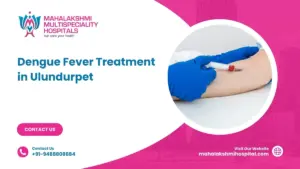Hearing the words “you have breast cancer” can bring fear, confusion, and countless questions. It’s completely natural to feel that way. But the reassuring truth is that today, breast cancer treatment has advanced tremendously — offering patients real hope, personalized care, and a strong chance of full recovery. With early detection, supportive care, and modern medical options, many people live long, healthy lives after treatment. In this article, we’ll walk through what breast cancer is, its stages and symptoms, the main causes, and the available breast cancer treatment options helping you feel informed, confident, and supported every step of the way.
What is Breast Cancer?
Breast cancer occurs when cells in the breast begin to grow uncontrollably, forming a lump or mass that can spread to nearby tissues. It is one of the most common cancers affecting women, but it can also occur in men. The positive news is that early detection and appropriate breast cancer treatment lead to excellent recovery rates. Modern medicine offers targeted therapies, advanced imaging, and minimally invasive surgical techniques that improve both survival and comfort. The goal of breast cancer treatment is not just to eliminate cancer but also to preserve quality of life focusing on physical, mental, and emotional well-being throughout recovery.
Types of Breast Cancer
Breast cancer can develop in different parts of the breast, and understanding its type helps doctors choose the most effective breast cancer treatment. Here are the main types:
1. Ductal Carcinoma In Situ (DCIS): An early, non-invasive cancer where abnormal cells are found inside the milk ducts but haven’t spread. It’s often curable with surgery and radiation.
2. Invasive Ductal Carcinoma (IDC): The most common type of breast cancer. It begins in the milk ducts and can spread to surrounding tissue. IDC responds well to early breast cancer treatment.
3. Invasive Lobular Carcinoma (ILC): Starts in the milk-producing lobules and can spread to nearby tissues. It may be harder to detect but is treatable through surgery, hormone therapy, or targeted care.
4. Triple-Negative Breast Cancer (TNBC): A more aggressive form that doesn’t respond to hormonal therapy. It often requires chemotherapy or immunotherapy as part of its breast cancer treatment plan.
5. HER2-Positive Breast Cancer: This type produces too much of the HER2 protein, causing faster cell growth. Targeted therapy has greatly improved outcomes for patients with this form of cancer.
6. Inflammatory Breast Cancer: A rare but fast-growing type that causes redness, warmth, and swelling. It requires prompt and aggressive breast cancer treatment with chemotherapy and radiation.
7. Metastatic (Stage 4) Breast Cancer: This is cancer that has spread beyond the breast to other organs like the lungs, bones, or liver. Ongoing breast cancer treatment by stage focuses on controlling symptoms, slowing progression, and maintaining quality of life.
What are Breast Cancer Symptoms?
Recognizing symptoms early can make all the difference. Some common signs include:
- A lump or thickened area in the breast or underarm
- Swelling, redness, or irritation of breast skin
- Changes in shape, size, or appearance of the breast
- Nipple inversion or unusual discharge
- Persistent breast or nipple pain
It’s important to remember that not every lump means cancer. However, if you notice any of these warning signs, it’s best to consult your doctor. Early screening allows for faster diagnosis and more successful breast cancer treatment.
What Causes Breast Cancer?
There isn’t a single cause of breast cancer, but certain factors can increase risk.
Some common causes include:
- Family history of breast or ovarian cancer
- Genetic mutations (such as BRCA1 or BRCA2)
- Hormonal changes or long-term hormone replacement therapy
- Aging, radiation exposure, or obesity
- Lifestyle factors such as alcohol use, poor diet, and lack of exercise
While these may raise your risk, they don’t guarantee cancer will develop. Staying proactive with regular checkups and mammograms can ensure that if changes do occur, breast cancer treatment begins as early as possible for the best outcome.
Stages of Breast Cancer
Understanding the stage of breast cancer helps doctors create the most effective care plan. Staging describes how much the cancer has grown or spread.
- Stage 0–1: The earliest form, often confined to the breast ducts. Stage 1 breast cancer treatment usually involves surgery or localized radiation and has an excellent success rate.
- Stage 2–3: Cancer may have spread to nearby lymph nodes but is still very treatable with a mix of surgery, chemotherapy, and radiation.
- Stage 4: The cancer has spread to other organs, requiring a more comprehensive approach combining multiple therapies.
Each case is unique, and doctors customize breast cancer treatment by stage to ensure the best possible results. From stage 1 breast cancer treatment to advanced therapies, treatment plans are designed to target the disease effectively while maintaining strength and confidence.
Breast Cancer Treatment Options
The right breast cancer treatment depends on your cancer’s stage, type, and overall health. Treatment plans are personalized to fit each patient’s needs and goals.
Here are the main options:
- Surgery: Removes the tumor and, if necessary, nearby lymph nodes. Depending on the case, doctors may recommend a lumpectomy (removing the lump) or mastectomy (removing the breast).
- Radiation Therapy: Uses targeted beams to destroy remaining cancer cells after surgery and reduce recurrence.
- Chemotherapy: Helps kill cancer cells throughout the body. It’s often used before or after surgery to shrink tumors or prevent regrowth.
- Hormone Therapy: Blocks hormones like estrogen or progesterone that can fuel certain breast cancers.
- Targeted Therapy and Immunotherapy: Advanced treatments that identify and attack specific cancer cells while minimizing harm to healthy tissues.
Every plan is carefully designed under the guidance of a medical team specializing in breast cancer treatment by stage. Whether you’re receiving stage 1 breast cancer treatment or more advanced therapies, your care team will focus on both effectiveness and comfort.
About Cost:
The breast cancer treatment cost can vary based on the hospital, type of therapy, and stage of the disease. Many hospitals and insurance programs offer financial support to make treatment accessible for all. Discussing the breast cancer treatment cost early with your doctor helps you prepare confidently and focus on recovery.
Results
Thanks to early detection and modern medical advances, most people recover well after breast cancer treatment. Survival rates continue to improve, and many patients go on to live long, fulfilling lives. Recovery isn’t just about treating the disease it’s also about emotional healing, nutrition, and lifestyle changes that help you stay healthy and strong. Remember, you’re not alone. With professional care, family support, and the right treatment plan, life after breast cancer treatment can be bright, active, and full of hope.
Read also: Best Oncology Treatment in Chennai






